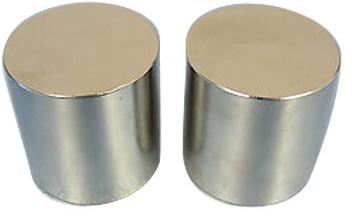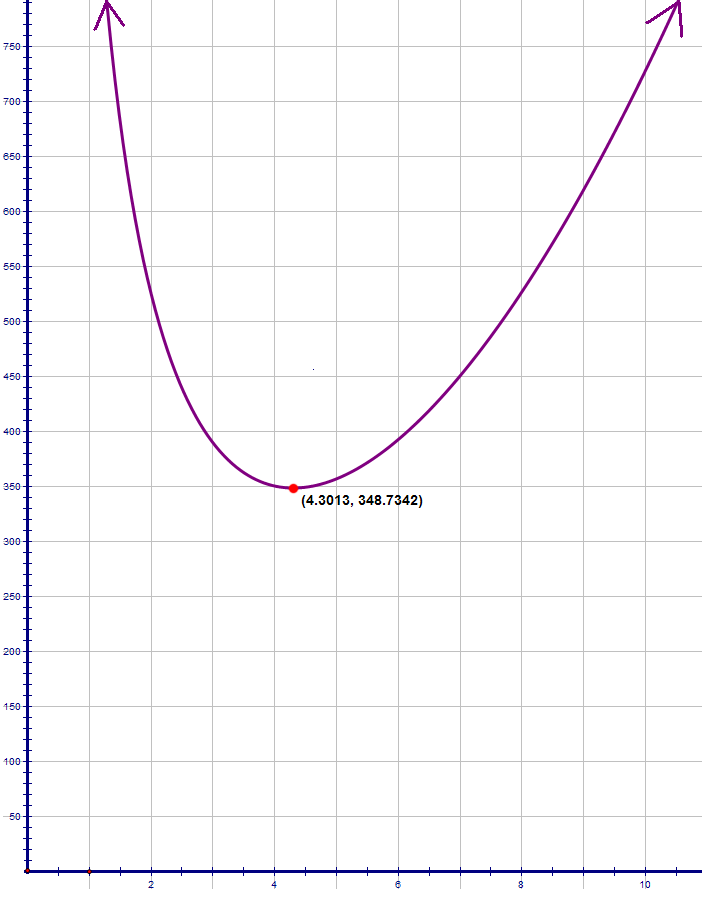



The Most Efficient Cylinder
 The generic equation for the surface area of a cylinder is
The generic equation for the surface area of a cylinder is  .
.Since multi-variable equations aren't of much use here, h can be rewritten in terms of r as
 . This yields an equation of
. This yields an equation of  .
.This equation is then graphed in order to find the point where surface area is the smallest, with X being radius and Y being surface area.

Using the calc-minimum function of the TI-83/84, the vertex is found to be approximately
(4.3013, 348.7342)
. Thus, the radius is plugged back into the equation for height to find that the corresponding height is8.6025 cm
.Therefore, the ratio of the radius to the height is
 .
.